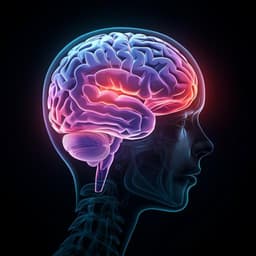
Medicine and Health
Deep learning based automatic detection algorithm for acute intracranial haemorrhage: a pivotal randomized clinical trial
T. J. Yun, J. W. Choi, et al.
This innovative study developed and validated an AI algorithm that enhances the diagnosis of acute intracranial hemorrhage through brain CT imaging. The research reveals that AI-assisted interpretation significantly boosts diagnostic accuracy, especially among non-radiologist physicians. This groundbreaking work was conducted by a team of experts including Tae Jin Yun, Jin Wook Choi, Miran Han, Woo Sang Jung, Seung Hong Choi, Roh-Eul Yoo, and In Pyeong Hwang.
Playback language: English
Related Publications
Explore these studies to deepen your understanding of the subject.







